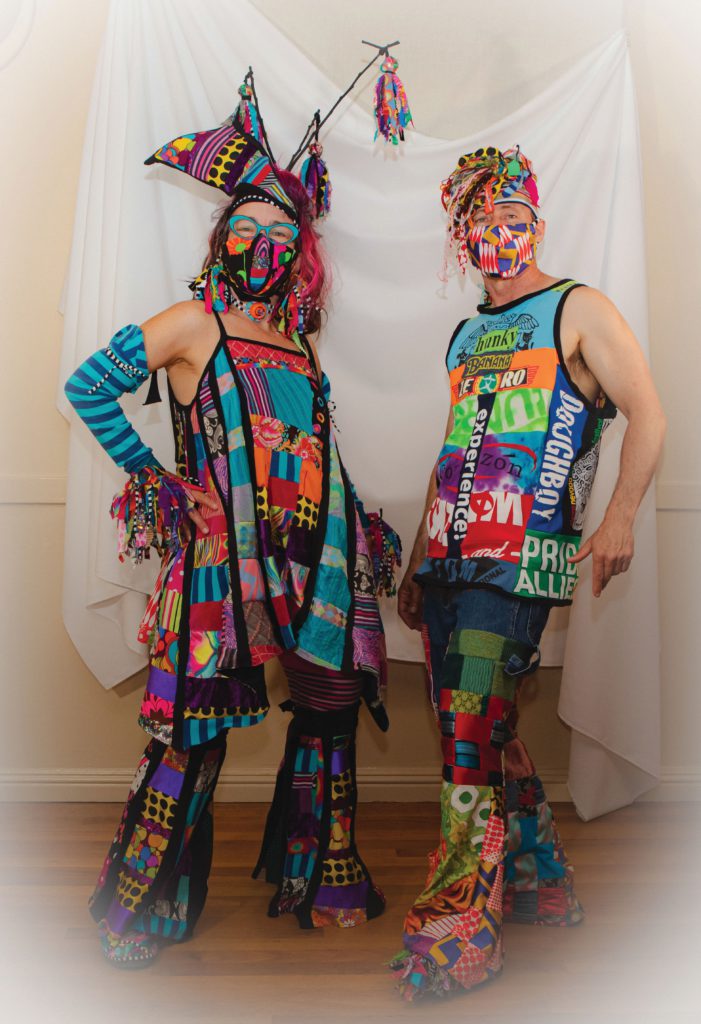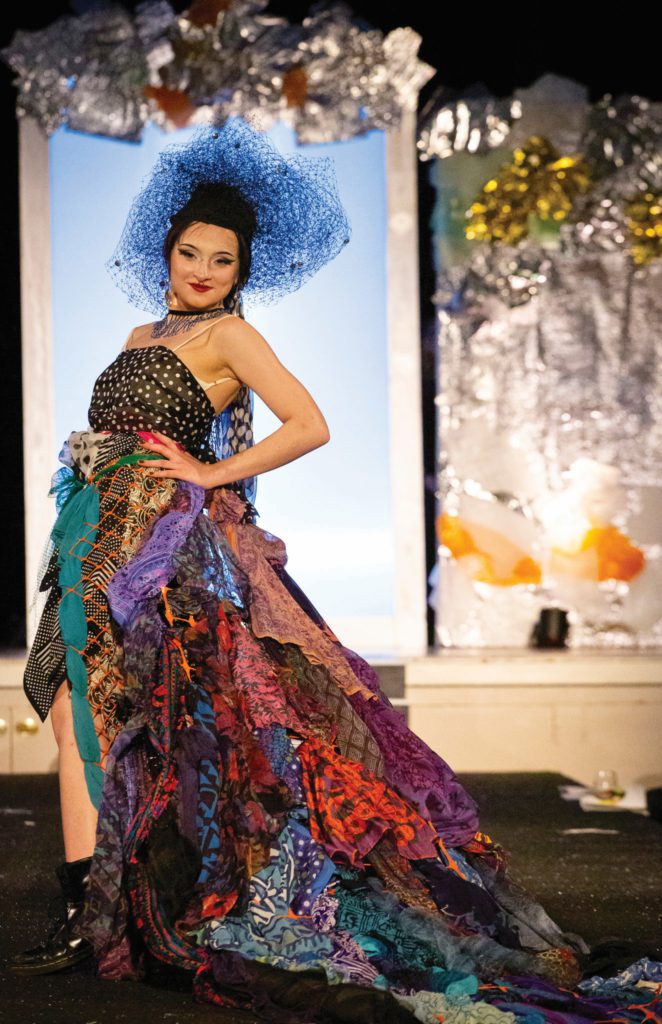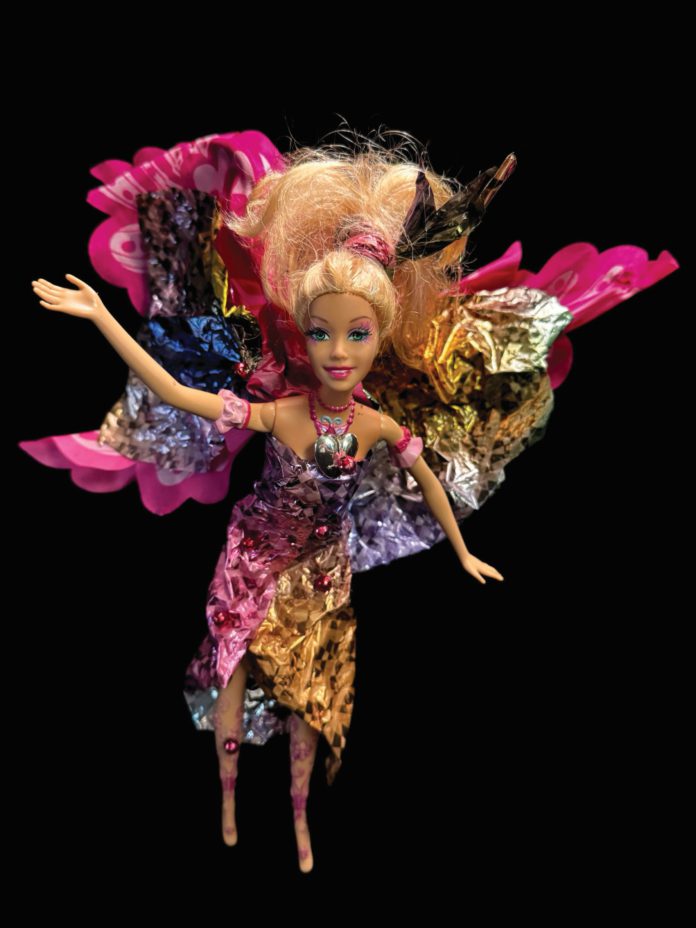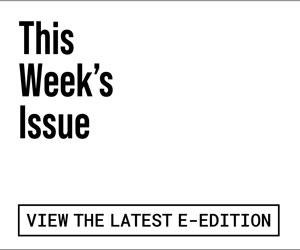Let us begin this story in bubbles … with “Barbie Spa Day.” See 12-inch Barbara Millicent Roberts (Barbie) and friends lounging in plastic repose on a broad strip of terry cloth. She and the dolls have been freshly scrubbed by the careful gloved hands at the Sonoma Community Center.
See in this line of dolls a symbol—our consumerist world in perfect order. Barbie is at the spa, and everything is as it should be. …
Environmentalist Barbie?
Ah, but there is something amiss. Look closer at this icon. Barbie looks a bit drug—a bit bedraggled, her nerves all a-jangle. In truth, Barbie doll has just had a harrowing ordeal. In a misadventure that reads like a sequel to Greta Gerwig’s Barbie movie, Barbie and her friends have just been saved from a fate worse than death—toxic entombment at the Sonoma dump.
Thrown into the trash, these misfit toys would have been buried in the dump with the river of our vast refuse—Barbie mixed up with the makeup compacts and Solo cups, blister packs and netting, loose batteries and detergent bottles, last season’s fast-fashion and plastic Coke bottles, which, step-by-step and layer-by-layer are slowly filling a low Sonoma valley like a dam.
Actually, our dump can be compared to the communal construction of a great inverse pyramid—one made of garbage. Both witty and unwitting, our dump is the true symbol of our consumerist world, like to be studied along with the Giza pyramids by anthropologists from Mars 3,000 years hence.
But in this brave new script—a rewrite—the Barbie doll has been saved just in the nick of time. She and her friends were pulled from the conveyor belt by the careful gloved hands at Recology waste and recycling, and reboxed for Sonoma Community Center.
In the first Barbie movie, anti-feminist Barbie was redeemed as a feminist icon.
In this story, its worthy sequel, plastic Barbie will have a chance at redemption as an ecological symbol. For newly recycled Barbie and friends are on their way to become models for doll clothing made of recycled trash at the Sonoma trash fashion program. … And Ken too.
The Trash Fashion Runway
Here at the home of Sonoma Trashion Fashion, the Sonoma Community Center, our story gets bigger. It gets bigger and bigger and finally pops in showers of confetti and glitter as the the 12-inch tall Barbie runway of mock-up clothing designs extends onto “junior” and “adult” runways with live models and full-scale “trash fashion” designs.
Dozens of amateur and professional designers from the Sonoma valley and as far away as New York and Japan volunteer months of hard work to make full-sized couture and ready-to-wear designs out of garbage.

Some of these designers recreate the latest trends, others recreate archival classics from the great couture houses, while still others remake period costume, Mexican folkloric dress, fantasy archetypes or speculative futurism—all out of trash.
Whatever the year, and whatever the entries, this charity event is reliably one of the great spectacles of our region—as well-coached amateur models romp down the runway in tuxedos made of voided carnival tickets and opera gowns made of Cheetos bags, Ascot race hats studded with split soda cans blooming into flowers and cocktail dresses made of folded calendar pages, cowboy dusters stitched with hundreds of sprung keyboard keys and Baroque armor made of beer boxes—all to the certain relishment of whooping crowds.
Wine Country Saturnalia
Some use the word “Dada” or “Gaga” to describe the power of this spectacle in Sonoma. Others use the word “burlesque,” with its love of satire, or queer “camp,” with its love of trashiness (see John Waters, “The Pope of Trash”). Personally, I would evoke the Roman holiday of “Saturnalia”—the orgiastic festival of class inversions. It was a holiday where a peasant or a rag picker could become a king for a day … or for that matter, a stolid Sonoma matron can become a supermodel serving face in a frock made of trash.
Just one block from the high-end spas and artisanal cheese shops of Sonoma square plaza, the Sonoma Trashion runway serves as a one-day liberation for a town and valley cosseted and corseted by the universal victory of their own “gracious wine country living™” branding.
In Sonoma’s Trashion saturnalia, old men and sensitive children become diva supermodels, Barbie becomes an environmentalist, charitable giving becomes abundant, education programs are funded, clothing hobbyists become couturiers, good ecology becomes trendy, dreary and moralistic recycling become fun and sexy, human creativity is fully unleashed and communal love becomes palpable. If only for a day.
In the words of “The Trashion Icon™,” Spenser DeSylva, all “Trash becomes treasure” on this annual holiday in Sonoma.
However one sorts it, Sonoma’s Trash Bash is a smash, and the crowds can’t get enough. Two back-to-back sell-out runway shows are needed to accommodate all of its clamouring fans, and the event grows and grows year on year.

The Trashion Exec Council
According to Sonoma Trashion Fashion founder and outré costume designer Margaret Hatcher, even their first trashion event at a smaller venue was a total “mob scene,” with people hopping fences to grab standing room. Sonoma Community Center had discovered something for which people were thirsting.
Hatcher is still very active on the trashion scene but retired from the role of trashion fashion chairperson. Last week, she was honored by Sonoma Mayor Patricia Farrar-Rivas with a key to the city and awarded the status of “living cultural treasure.” In her shining moment, Hatcher was becomingly modest, declaiming any sagacity or originality for the trash fashion concept. Instead, she credited the community center’s core staff and many volunteers for continuing to grow the event into its 15th spring blossoming.
In that blooming, the one-off event became an annual, and expanded from a day to a week to a whole month of programming—with classes, design workshops, the Barbie design runway, an educational and sponsoring partnership with Recology Sonoma-Marin, public school programs and at least one spin-off event—“Trashlantis” (one may assume, rising again out of the ocean’s “great garbage patch”).
In its growth, staying power and progressive sophistication, Sonoma Trashion has slowly built a place for itself in the national recycled art movement. It’s earned the attention of such luminaries as Debra “Debris” Rapport.
“Refuse” Rapport, a New York based recycled-fashion pioneer and influencer, is best known for her “stunner” hats and accessories made from scrap metal and toilet paper rolls (see link at end). Having seen Sonoma Trashion multiple years as a runway judge, she also commends the passion and the cohesion of the center’s “Trashion executive council,” now headed by engagement director Molly Spenser (with the guidance of executive director Vanessa Rognlien).
The Process and the Journey
Of course, there would be no show without the all-volunteer trashion fashion designers, who grow in their number and sophistication each year. According to Spenser DeSylva, “The Trashion Icon™,” their design process begins in thoughtful consideration of what they throw into our dump.
Day-by-day and week-by-week, our personal habits produce multiples of any given trash item. Over not very much time at all, a weekly bag of Cheetos, yogurt cup or webbed sack of oranges adds up to a stinking heap. At the prompting of Sonoma Trashion Fashion, we are all invited to consider how our personal trash might be re-worked into clothing and accessories. And that’s where the fun really begins.
With delightful ingenuity, designers spend months conducting their own DIY materials science, working and treating their trash in an exploratory process of hits and misses.
Last year, local artist Kara McHale was inspired by the love she shared with her father for cold cans of Diet Pepsi. The vision was a floor length disco dress of flashing silver coins punched out of the many cans they popped.
Unfortunately, McHale discovered the aluminum coins cut like a dress made of razor blades, so the coins were subsequently cornered and lacquered in a silvery rainbow of colors. The resulting dress of more than 400 colored coins stunned at last year’s show. The most remarkable thing about it was that it was indistinguishable from non-trashion couture.
While the funniest trashion designs wear their trashy origins on their mutton chop sleeves, the most subversive designs aren’t recognizable as recycling. They fully blend in. Those designs point to our potential independence from the world garment industry—the world’s third biggest polluter of the Earth (after agriculture and energy industries).
Three days before Earth Day, on April 19, McHale will be joined by 40 some other trashion designers coming from similar journeys to produce this singularly lively and hopeful runway spectacular.
The Future Is Trash(ion)
At 15, this fundraiser for the Sonoma Community Center has become an institution. With their continuing presence and growth in the region, one can imagine the outgrowth of other annual programs at other venues for—say, the making of recycled children’s toys or redeemed art objects that have as much ingenuity and joy as Trashion Sonoma.
One can just see the budding of new annuals for recycled decor and interior design, recycled fencing and facades, whole ADUs, junked bikes and junker cars, all of them diverting more and more trash away from our monumental dump.
Together, these programs could produce a regional culture of recycling suffused with the same joy and communal love. There one has the vision at the heart of trashion.
It is generally supposed that the process of transitioning from a consumerist to an ecological culture will be hard and comfortless. Trashion Fashion Sonoma belies that deadly assumption. The transition to good ecology could be as fun and communal as a neighborhood scavenger hunt for old ties to complete a short cape. We might find that while we consume less, we have gained something we want even more than we want Shein or Temu.
That is a possible future. It is also a historically turbulent time, making the future even harder to predict. But whether we co-create a green ecotopia or consume and bomb our way into a Mad Max garbage wasteland, one can be certain that in the future, we will all be wearing trashion.
Perhaps Greta Gerwig will make Trashion Fashion the plot of Barbie 2.
The 15th Annual Trashion Fashion Runway offers two programs—a 2pm matinee and a 5pm evening show, both on April 19, at the Sonoma Veterans Memorial Hall, 126 1st St. W., Sonoma. Tickets for the individual shows are available at sonomacommunitycenter.org/trashion-fashion.
‘Trash Bash,’ a free closing party co-hosted by Recology, will be held 11am to 3pm, April 26, at the Sonoma Community Center, 276 E. Napa St., Sonoma. Follow linktr.ee/trashionLINKS or scan the below qr code with a phone to learn more.










